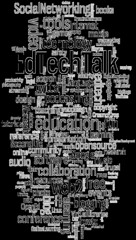It's Elementary Show #21: Pre-Service Teachers and Technology
This show featured Clif Mims, a professor at Memphis State University, and Bethany Smith, an Instructional Technologist at North Carolina State University. Both of them work with pre-service teachers to help them learn about how to effectively use technology in the classroom.
We started off with our backgrounds, and what we were required to do vis-a-vis technology in our pre-service. Then we looked at these essential questions:
- Are pre-service teachers being well prepared for entering k12 classrooms today.?
- Are pre-service teachers bored in college lectures? Does this affect entry into the field?
- What are your recommendations for best preparing pre-service teachers?
Bethany felt that teachers needed to have a PLN through Ning, or another service, to go to. Clif thought they needed to see examples of teacher who are using technology successfully. Alice felt that with the advent of more scripted/prescribed curriculum, teachers needed to see what project-based learning looked like. It was a great discussion, and the text chat log below includes comments from teachers who are taking a class on education technology.
| Attachment | Size |
|---|---|
| 32.65 KB |
- Log in to post comments


Comments
pre-service preparation to integrate technology
Often pre-service teachers anticipate that issues and factors impacting their future decisions can be explained briefly and that reading about technology use is unnecessary. they prefer to have time to investigate technology and often expect faculty to be knowledgeable about all aspects of technology.
Providing pre-service teachers numerous opportunities to observe technology use in classrooms and then create and implement technology-supported lessons or activities - even though this is a very costly form of training - is ideal. Some students enjoy the opportunity to select specific devices, tools, & applications to investigate and devise evidence of how these aspects of technology can facilitate instruction within a specific content area or grade level. Many students seem to need direction to get to this point of self-directed exploration and documentation of their learning.
Balancing all of these approaches and needs for appropriate technology integration training - and emphasizing how this process is ongoing and takes more time than one specific course - remains a challenge for instructors and students.
How we teach, how we evaluate student learning, how we document student learning - all of these aspects of education have changed dramatically over time. There remains doubt and reluctance to embrace these emerging approaches that use the benefits of technology. Often how we were taught has such an impact on how we expect to teach and communicate. I personally sense we can move forward despite these struggles.